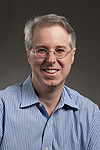Snowmass report: tackling the mysteries of the universe
 |
|
Stuart Henderson
|
Stuart Henderson, associate director for accelerators, wrote this report about the "Snowmass on the Mississippi" meeting in Minneapolis.
For nine days over the last two weeks, nearly 700 physicists from almost 100 universities and laboratories in the United States, as well as colleagues from Europe, Japan and other laboratories from around the world, gathered in Minneapolis for the final meeting of the 2013 Snowmass Community Summer Study, which kicked off with a meeting at Fermilab last October. Jim Siegrist, associate director for High Energy Physics in the DOE Office of Science, as well as several other program managers from DOE and NSF, also devoted nine days of their time to listening to and interacting with members of the community. Our incoming director, Nigel Lockyer, gave a presentation on the first day of the meeting.
Organized by the American Physical Society Division of Particles and Fields, the summer study is an opportunity for the U.S. particle physics community to take stock of the greatest unsolved mysteries of matter, energy, space and time and discuss the facilities and experiments that would help solve them. It has brought together experts in particle detectors, particle accelerators, theoretical physics, computing and many other areas of research related to particle physics.
From breakfast in the dorm to ad hoc discussions in classrooms and hallways, the University of Minnesota campus allowed the opportunity for many informal discussions, which were important for gathering ideas and discussing the possibilities. Many Fermilab scientists and users actively participated in the various study groups of this year's meeting, and I thank all of you for your very hard work over the last nine months.
The leaders of the Community Summer Study were charged with developing the field's long-term physics aspirations. The following give a flavor of the type of "big questions" the field plans to address over the next two decades:
- The Higgs particle is unlike any other particle we have ever encountered. Why is it different? Are there more?
- How do neutrinos fit into our understanding of matter, energy, space and time?
- What is dark matter? Can we detect it in our labs? Are there other undiscovered particles in nature?
- Are nature's four known forces aspects of a single unified force? Are there additional forces?
- Are there new, hidden dimensions of space and time?
- Both matter and antimatter were produced in the big bang, but today our world is composed only of matter. Why?
- Why is the expansion of the universe accelerating?
You can read the press release issued by the American Physical Society.
The summer study evaluated the potential of many existing and proposed facilities to answer those questions, including the LHC (and its high-luminosity upgrade), LBNE, Project X, the ILC, dark-matter detection experiments and cosmological dark-energy surveys. Scientists, educators and communicators discussed better ways to explain the community's work and ambitions to policymakers, students and the public.
A number of round-table panel discussions were held on many of the difficult questions that face our field. I participated in a lively panel discussion on the balance in the U.S. program between domestic and overseas facilities with Priscilla Cushman, David Gross, Joe Incandela, Chris Quigg and Kate Scholberg.
It was great to see so many scientists with diverse interests and opinions come together to chart the course for particle physics. A truly astonishing range of physics topics and technology capabilities were explored and discussed in detail.
The study's final report will provide essential input for the U.S. Particle Physics Project Prioritization Panel. The panel, which will start its work this fall under the leadership of Professor Steven Ritz from the University of California, Santa Cruz, will develop an affordable strategic plan for our field and advise the funding agencies on future U.S. investments that will enable particle physicists to tackle the big questions.
The summer study's final report will be published by Nov. 1. Until that date, I encourage you to read the summary presentations shown on Monday and Tuesday in Minneapolis to learn more about the field's long-term scientific aspirations and the path to achieve them. (Click on the folder icon to the right of the speaker's name to download the corresponding presentation.)
I also thank Jonathan Rosner, APS DPF chair, and the working group conveners, who did a great job organizing this summer study and bringing everybody together. The local organizers, led by Dan Cronin-Hennessy and supported by more than a dozen undergraduates at the University of Minnesota, helped make the final meeting a great success. Thank you.
 |
Nearly 700 scientists participated in the "Snowmass on the Mississippi" conference at the University of Minnesota. Click to enlarge. Photo: Reidar Hahn
|
|